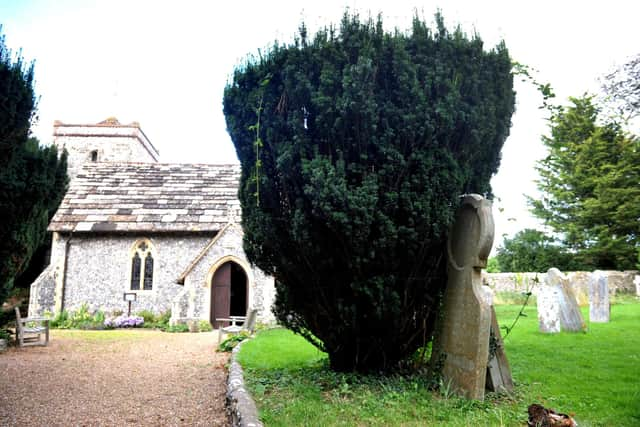Plans to chop back dozens of yew trees in historic Sussex churchyard
and live on Freeview channel 276
Officials at St Peter’s Church in Upper Beeding want to lop up to eight feet off 36 yews in the grounds of the church – part of a conservation area – and are currently seeking permission from Horsham District Council.
In a statement to the council, the Rev Neill Stannard, from St Peter’s, says that the trees are currently up to 10 feet tall and have grown over headstones in some places leaving memorials only partially visible.
Advertisement
Hide AdAdvertisement
Hide Ad“The avenue of 36 yew trees that runs down the path in St Peter's churchyard, Upper Beeding, towards the church is usually – we have been told by congregation members – pruned every two to three years but hasn't been cut back for at least five years,” he said.


"They are supposed to be small – under 2ft – but are currently 8 to 10ft tall. In some cases, they have grown over headstones so that the memorials are either only partially visible or fully obscured which is a cause of distress for visiting family and friends.
"They are also so bushy that people can now only walk down in single file because they have toxic leaves and brushing against them can cause skin irritation. They also make it very difficult to see the church.
"We have consulted the diocesan tree surgeons (Richard White at Sussex Tree Surgeons) and they informed us that yew trees as overgrown as these will be rejuvenated by cutting back very hard or to the stumps.
Advertisement
Hide AdAdvertisement
Hide Ad"They informed us that they will grow back very quickly and in much better health. We plan to cut them down to 1.5ft in some cases to prevent path encroachment and to improve the health of the trees and to the stumps where they have obscured headstones which need to be uncovered.”
St Peter’s is also known as the ‘Sele Priory Church’ and was for many centuries a Benedictine Priory. It was almost completely demolished and rebuilt in 1307-1308. The church is a Grade II listed building.
Yew trees are thought to be able to live for 3,000 years although 1,500 is more frequent.
